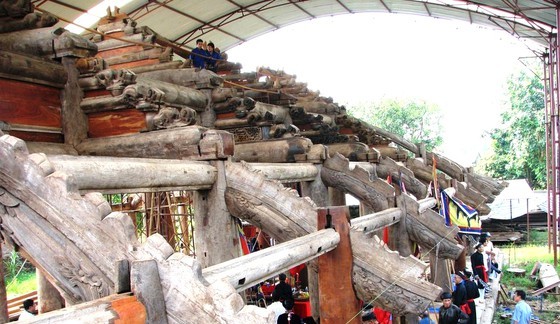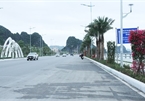Heritage management is mainly carried out by the agencies of the same ministries, without the participation of related branches and agencies.

This has led to a number of consequences such as unsustainable heritage management, and conflict between heritage conservation and economic growth.
The big lessons from heritage management, such as the illegal giant construction work in the core Trang An heritage area in Ninh Binh, or the drilling and chiseling to hang boards at the ancient Cham Tower in Binh Dinh, are still very fresh.
Many reasons behind the problems in the protection and promotion of tangible and intangible cultural heritage values have been cited, including the shortage of manpower.
| Staff working in the field of cultural heritage management are still small, with limited management and professional skills, while the projects on preserving and promoting the value of heritage sites still cannot be built and implemented in a timely manner. |
According to Le Thi Thu Hien, director of the Department of Cultural Heritage under the Ministry of Culture, Sports and Tourism, staff working in the field of cultural heritage management are still small, with limited management and professional skills, while the projects on preserving and promoting the value of heritage sites still cannot be built and implemented in a timely manner.
The lack of both specialists and workers in heritage conservation is evident in the work of restoration and embellishment of vestiges.
Luu Tran Tieu, chair of the Vietnam Cultural Heritage Association, said the human resources in the vestige conservation in Vietnam are not trained in conservation, resulting in different awareness of the principles and perspectives on conservation of relics.
The low professionalism of conservators and dispersed resources are the real situation of the workforce in the heritage preservation. Trained workers cannot participate in heritage preservation projects. Most local heritage management officers hold different duties concurrently and they are not provided with deep knowlege about preservation.
As a result, many acts of infringement on relics cannot prevented in time, while administrative sanctions and disciplinary actions against officials cannot help.
Professor Tran Lam Bien stressed that the demand for training human resources for heritage preservation in general and vestige restoration in particular has become more urgent and important than ever.
He also pointed out that in the long term, it is necessary to train qualified specialists, because only good specialists can create good and enthusiastic workers, who directly ‘touch’ relices.
Therefore, the Hanoi National University decided to begin enrolling students for the master training course majoring in heritage preservation.
According to Nguyen Kieu Oanh, deputy head of the Faculty of Interdisciplinary Sciences under the Hanoi National University, instead of the single training in conservation, museum and restoration, the master training course will provide interdisciplinary professional skills with high practicality. Therefore, learners will be able to identify, classify, evaluate and solve practical problems in heritage research, practice and management.
Mai Lan

Quang Ninh province to build “heritage road”
The northern province of Quang Ninh plans to build a “heritage road” through art works along the Ha Long-Cam Pha-Van Don coastal route.

ASEAN Heritage Parks of Vietnam
ASEAN Heritage Parks (AHPs) represent the efforts of ASEAN member states to conserve biodiversity and promote tourism in the region. With 10 ASEAN heritage parks, Vietnam is home to the highest number of such parks in the region.
 Vietnam has many heritage sites to preserve, but there are problems in heritage preservation as conservators are not trained well.
Vietnam has many heritage sites to preserve, but there are problems in heritage preservation as conservators are not trained well.